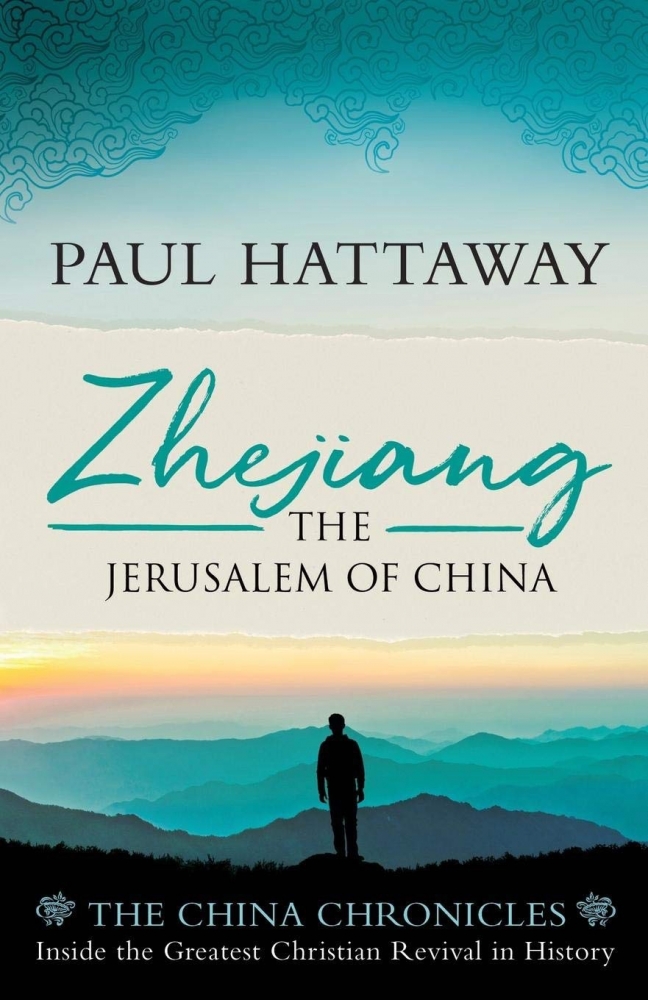
DAVID ADAMS reads the latest in Paul Hattaway’s series on the history of Christianity in China…
Paul Hattaway
Zhejiang: The Jerusalem of China (The China Chroncicles)
SPCK/Asia Harvest, London, 2019
ISBN-13: 978-0281080342

The third in Paul Hattaway’s series (following on from his books focusing on Shandong and Guizhou provinces), this book takes an in-depth look at the history of evangelical Christianity in the central coastal province of Zhejiang.
One of the smallest but most populated provinces in China (54 million in 2010), Zhejiang, which means “Silent River”, takes its name from the Qiantyang River which flows past the capital Hangzhou.
The Nestorians were the first to arrive in the province before the year 1,000 but they had disappeared by the time the Roman Catholics arrived in the 1600s. The first evangelical Protestants arrived in the 1840s and initially established a foothold in the city of Ningbo, a so-called “treaty port” which meant British citizens had the right to reside there.
It was slow work at first, but the church slowly grew after the first Chinese recorded convert to evangelical Christianity in the province – a tailor named Bao Youyi – gave his life to Christ around 1845. Among the many courageous evangelicals who worked in the province during those early years was the famed Hudson Taylor – it was here much of his early ministry was carried out (and where he was embroiled in something of a scandal over his love for the much younger Maria Dyer whom he eventually married in Ningbo in 1858).
Treated initially as something of a curiosity, evangelical Christianity gradually began to spread and by 1880 there were more than 2,000 Christians and 50 churches in the province. Persecution, meanwhile, was ever-present with missionary Walter Lowrie the first evangelical martyr when he was killed in 1847. As Hattaway writes, during these years, many Chinese believers faced “excrutiating hardship and persecution from their families and communities”, with much of it never documented.
Hattaway writes of moments of great joy, of miracles and of the setbacks as the decades passed and we read the stories of people like British Methodist missionary William Soothill, the Thompson family who were among numerous missionaries martyred during the Boxer Rebellion in 1900, Chinese church leader Ren Chengyaun who became known as “the apostle of the Zhejiang Church”, and Miao Zizhong, a Christian known as the “Cedar of Lebanon” who, healed of an incurable disease, came to Christ and then remained steadfast in his faith despite years of persecution.
Communist forces took control of Zhejiang in the 1930s yet even amid the difficulties of the time – including the Japanese invasion of 1938, Hattaway writes that the hardships caused “thousands of disillusioned people to seek shelter in Jesus Christ” with a revival breaking out. There were more than 100,000 Christians estimated to be in the province by the end of 1939 with Watchman Nee’s ‘Little Flock’ the most significant church movement to enter Zhejiang at the time.
The arrival of Communist rule in China at the end of the 1940s and subsequent Cultural Revolution saw further persecution of Christians but, after Mao’s death in 1976, the “most brutal” anti-Christian persecution eased.
The history leads right up to the situation today where there are now more than 10 milion evangelical Christians in the province (the highest number, per capita, of any province in China) and yet Christians continue to face challenges to the practicing of their faith. These include campaigns in recent years to remove crosses and demolish churches as well as the ongoing harassment, persecution, and imprisonment of church leaders.
One of the most remarkable stories in the latter half of the book is that of the city of Wenzhou, which suffered considerable persecution in the early days of Communist rule when it was marked as a “religion-free zone”, but which emerged as a powerhouse of Christianity thanks, in part, to the wisdom of church leaders there in negotiating the way forward.
Documenting incredible stories of faith against the backdrop of the great sweep of history in China, this book – like the two before it – is eminently readable and offers a unique insight into the story of the evangelical church in the country.





